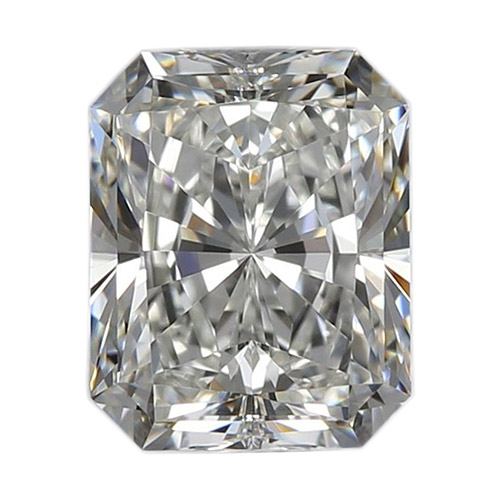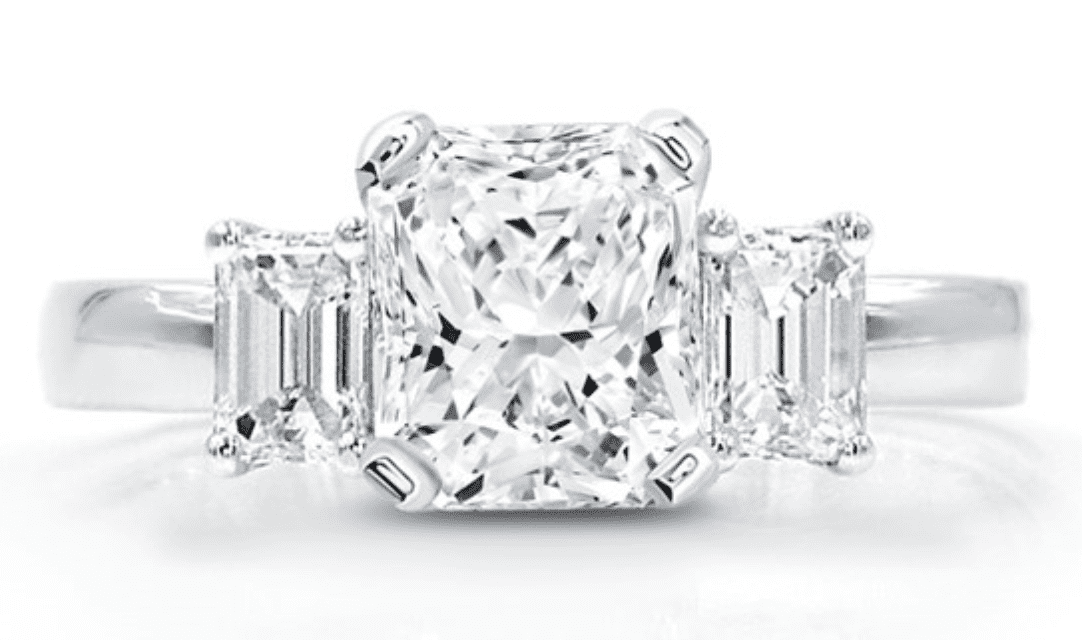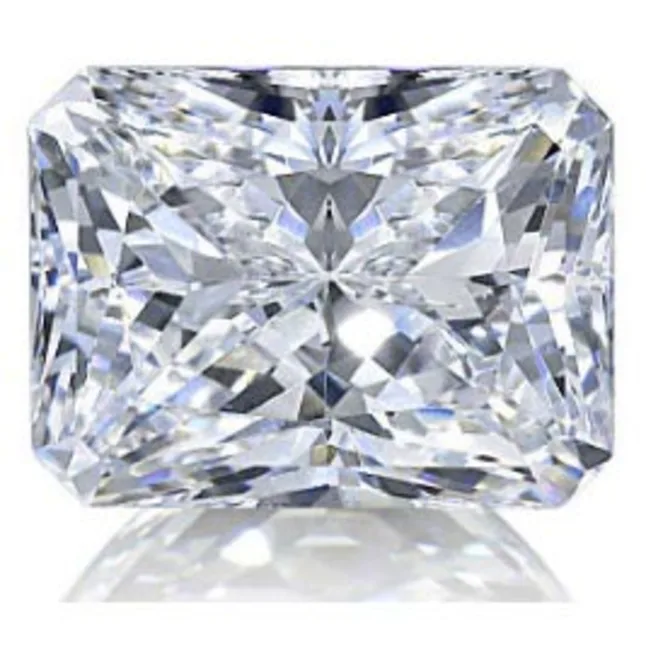What is it?
Inspired by the fire and shine of the more expensive modern round brilliant cut, as well as the angular lines of the emerald cut, the radiant cut features varieties of square or rectangular outlines with dazzling facets. First patented in 1977 by the great diamond cutter Henry Grossbard, the term “radiant” is now used broadly as a trade-term. However, you will likely see the technical description of “Cut-Cornered Rectangular Modified Brilliant” on GIA reports instead of “Radiant.”
Unique Facet Patterns
The beveled corners of these stones give them a curved, but still square look while the modern round brilliant-like pavilion facets create intricate and hypnotic sparkling patterns. The facets also can hide imperfections in the stone that might otherwise be visible to the naked eye. This means that you may be able to save some money by choosing a stone with less clarity and trade up to a larger diamond!

Radiants and Color
They can also serve to enhance and deepen color. As a result, you will find many fancy-colored diamonds in addition to the colorless variety. Also, for those who want to wear rings that go beyond the classic solitaire look and include multiple stones, these diamonds are a good option because their straight sides make them easy to set adjacent to other stones. It’s no wonder that many celebrities, such as J-Lo and Lea Michele, have opted for radiant cut bling in their engagement rings!

Not Like Other Elongated Shapes
Because radiants do not have sharp corners which can snag or break, they are more durable than other square-shaped stones and are an especially good option for those who work with their hands or are prone to exaggerated gesturing. Giving a flattering shape to the finger, they can appear larger than their round counterparts (always a plus!).
The facets of radiant cut diamonds are not held to exact proportions, and the color range represented on the market is vast, so each stone has its own unique personality. Therefore, when you find the gem that speaks to you, it’s literally a one-of-a-kind match!

